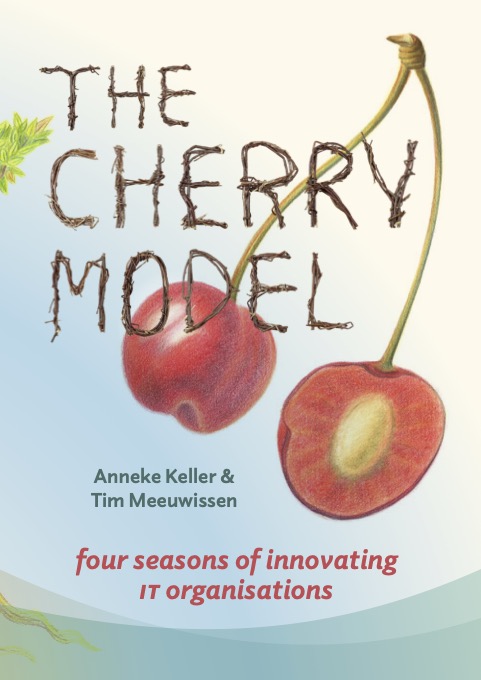

During the LEAD Seminar of March 6th 2024, Anneke took the stage to explain the four seasons of innovation within IT organisations. Re-watch the recording and/or read on to learn more about this well-designed concept.
Technology teams, entire companies even, need a certain rhythm to adapt to change. A certain method that you can follow as a leader to support your team in growing to innovation. Anneke will talk about this method and give examples from her experiences. Both successful and less successful, all with the intention for others to learn from it.
Anneke has spent 25 years working in the IT industry and has held leadership roles in organizations such as Wehkamp, Coolblue, Jumbo, KPN, TomTom, and she is currently the CTO of PostNL. Throughout her career, she has gained expertise in managing and scaling organizations, developing server-side and embedded software, implementing quality assurance measures, and working with distributed teams and cloud infrastructure. In her current role, Anneke provides coaching and interim work, using her wealth of experience to help others. In addition to her professional pursuits, Anneke is also a member of the Supervisory Board for WWF Netherlands, an organization dedicated to preserving the natural environment, and BrandMR, a company focused on making legal assistance more accessible.
LinkedIn Profile
Personal Website
Previously she was featured in our Lead Live Talkshow, where we talked about her new book “The Cherry Model”, which she has written with her co-author Tim Meeuwissen.
This is a summary of her story.
Leadership within technology can be challenging. Given the rapid pace at which the industry evolves, juggling team happiness, alignment, and performance takes a lot of work. This can especially be daunting during busier-than-usual times, where the situation can quickly devolve into one where the "blind is leading the blind." That's what I hope to address with my upcoming book, the "Cherry Model," and provide future leaders with a framework to avoid such pandemonium and ensure the team works well together, starts innovating and stays aligned.
After working in leadership positions for multiple big players within the exciting tech space for the last 25 years, I am all too familiar with the challenges one must face in such a position. "The Cherry Model" is meant to accumulate all the lessons I learned at KPN, TomTom, Coolblue, Jumbo and Wehkamp - all the things I did right and wrong, and what future leaders can take away from my mistakes. It aims to provide other leaders with a practical guide to make better decisions and avoid the pitfalls commonplace in the industry.
Perhaps the most critical takeaway is to help leaders identify the four distinct, cyclical phases that leaders must go through to ensure their department runs smoothly – one where the team is fully aligned on their goals and the steps to get there. The cycle involves four phases: Survive (Winter), Shape (Spring), Grow (Summer) and Harvest (Autumn).
For one to build a thriving culture, I’ve found that co-creation with the team is the key to unlocking success. A collaborative approach will not only incorporate diverse perspectives but also provide the teams with more ownership over the culture they have helped build. While I still think the old recruitment viewpoint of hiring people "who fit the culture" still has merit, we shouldn't shy away from individuals who can bring a fresh outlook to the situation. They can (and often do) bring valuable impact to the team. This process is an iterative one, and the culture may evolve as the team grows- if you let it.
I believe that teams can be compared to cherries (inspiring the name "The Cherry Model"), with a hard pit representing the hard skills and operational efficiency required for a functional department and the flesh of the cherry defining the soft skills and cultural grounding. The importance of the hard pit is prominent; it is crucial in ensuring a functioning team, to begin with, and it also determines the team's future growth.
However, the flesh of the cherry is what truly defines the cherry. Without the softer outer layer, is the cherry even a cherry? The environment enables an individual to thrive within the organization and contribute meaningfully to the team. And so, focusing on building the culture and soft skills surrounding the operational base layer is essential.
Finally, the management team is akin to the stems of the cherry fruit, whose role is to support the fruit meaningfully. A weak steam would not only mean that the fruit is not getting the nutrition it deserves from the rest of the organization (tree) but could also lead to the department's collapse.
The Cherry Model is a valuable framework for leaders to follow. It provides a clear roadmap to building a thriving workplace within the fast-paced and dynamic landscape that is the tech industry.
Anneke has been working in the technology industry for 25 years. She had the opportunity to lead IT teams through big transformations. During the first 10 years of her career the telecommunications company KPN transformed to a professional service organisation entering new markets like the mobile and internet market. Both TomTom and Coolblue grew tremendously while Anneke was heading their IT departments. At Jumbo, she was allowed to found and lead the Jumbo Tech Campus which, among other things, made their online proposition successful and future-proof. Her last employer is e-commerce company Wehkamp, where she was CTO.
Anneke now focuses on sharing her knowledge through writing, coaching, and interim work. For more information, visit her website at anneke.com. If you want to read the book of Anneke and Tim, you can pre-order the book “The Cherry Model” on this website or any (online) bookstore you prefer.



